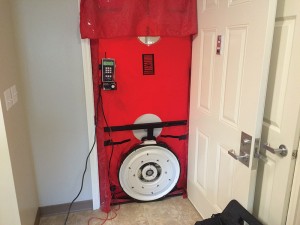
New York energy code and NYSERDA incentive changes - by James Moriarty
Last week brought two major energy efficiency changes to the New York multifamily development market; the adoption of a newer, more stringent energy code, and significant changes to the New York State Energy Research and Development Authority (NYSERDA) incentive programs.
On March 9, the New York Code Council voted to adopt the 2015 International Energy Code (IECC), effective this October. This change impacts R-2, R-3, and R-4 multifamily developments up to three stories in height, as well as single family homes. The 2015 IECC adoption represents a significant increase in energy code requirements, as compared to the 2009 IECC, which New York is currently following for residential building.
At the same time, NYSERDA released an update to the Low Rise Residential New Construction Program, with changes to the incentive structure for market rate and low to moderate income units.
The code change significantly impacts market rate multifamily developments because every multifamily unit will now require blower door testing and duct leakage testing by a qualified third party, mechanical ventilation, and more stringent envelope and mechanical requirements.
The NYSERDA changes are a big deal for affordable developments, while the code changes do not impact them much because they already are obliged to meet these requirements for NYSERDA, and they typically have been mandated to pursue NYSERDA incentives. This means less money will be available for the same performance than in the past. However, NYSERDA is offering its highest incentive to net-zero developments, which may drive more developments to pursue higher performance. In competitive funding applications, pursuing higher performance and net-zero could provide a competitive advantage.
For market rate developers, the NYSERDA incentives could be used to offset some of the newly mandated requirements of the 2015 IECC. Leveraging the NYSERDA incentives could make meeting the new code requirements more cost effective.
Partnering with an experienced Home Energy Rating System (HERS) Rating company, such as my company Sustainable Comfort, Inc. can help market rate developments meet the new code requirements and secure incentives to make it affordable. A HERS rater can run the required testing and demonstrate code compliance for your project.
A HERS rater is also required to pursue the NYSERDA incentives, and working with an experienced HERS rater is the best path to turning these changes into a financial benefit.
Sustainable Comfort is a green building and energy efficiency consulting firm with expertise in multifamily housing. SCI specializes in LEED for Homes, Energy Star Homes, Enterprise Green Communities, Passive House, HERS Rating, state incentive programs, and code compliance. The firm is also involved with the property management and development of multifamily buildings.
James Moriarty, HERS rater, RESNET quality assurance designee, is with Sustainable Comfort, Inc., Worcester, Mass.

